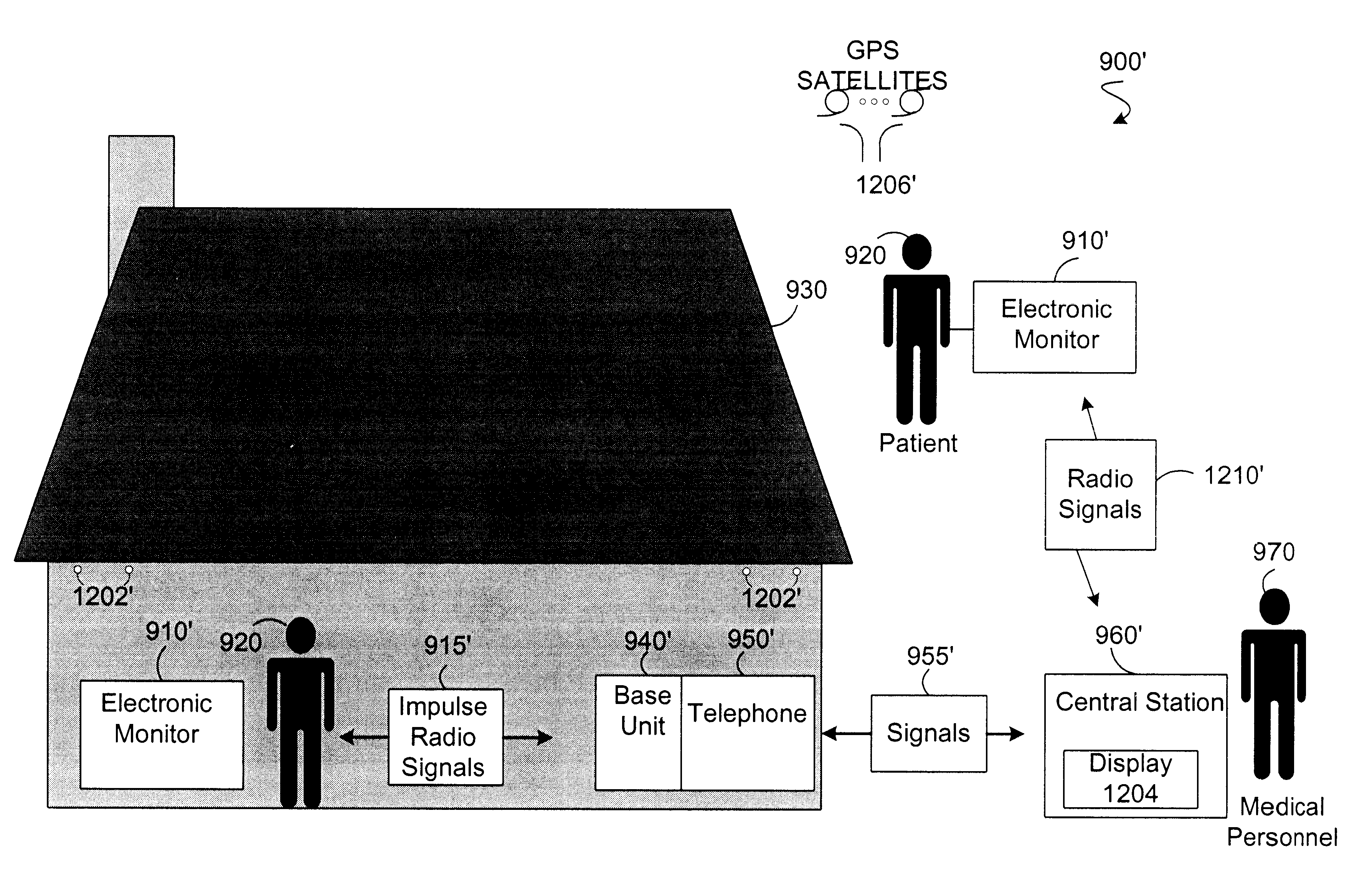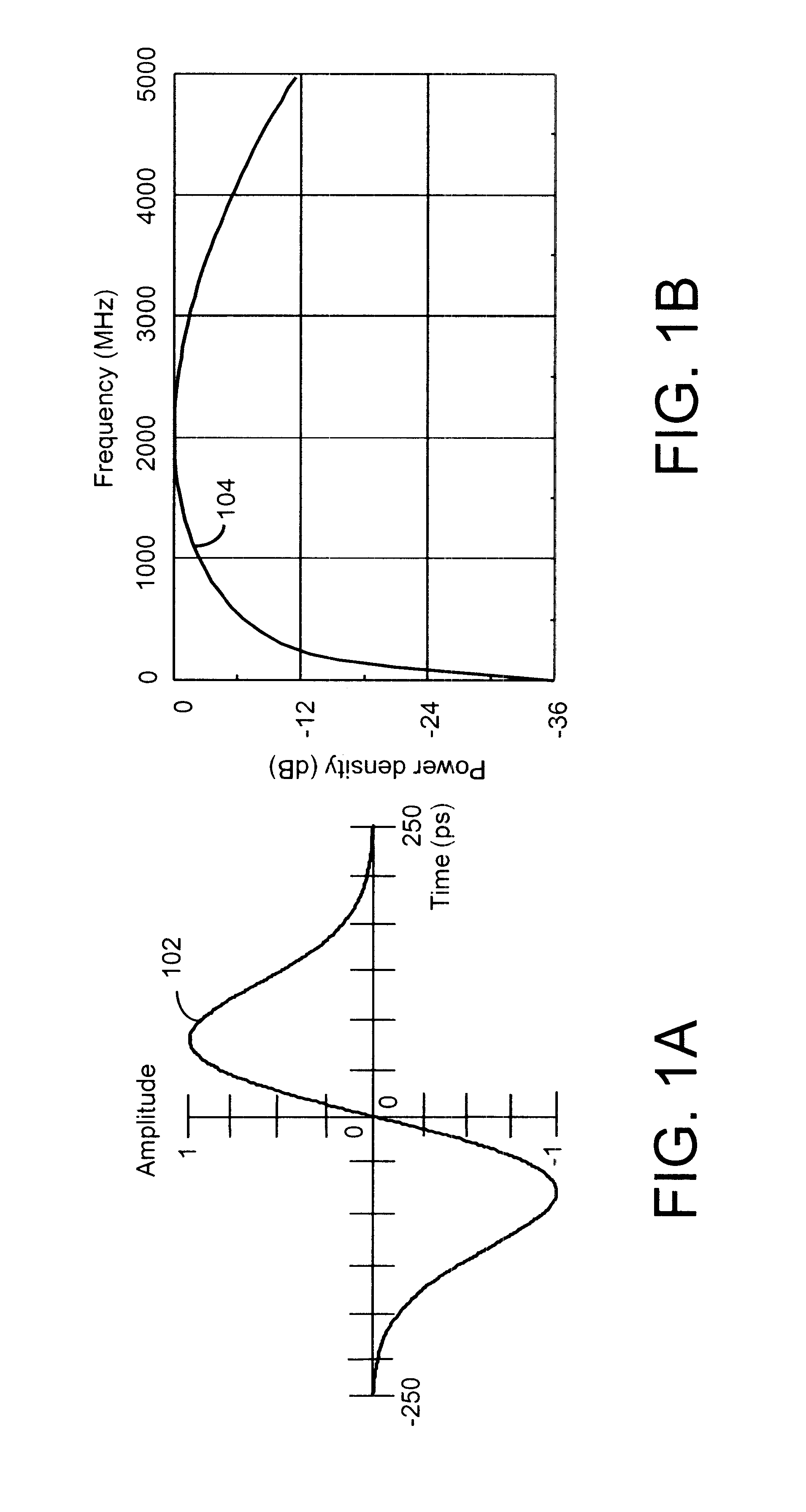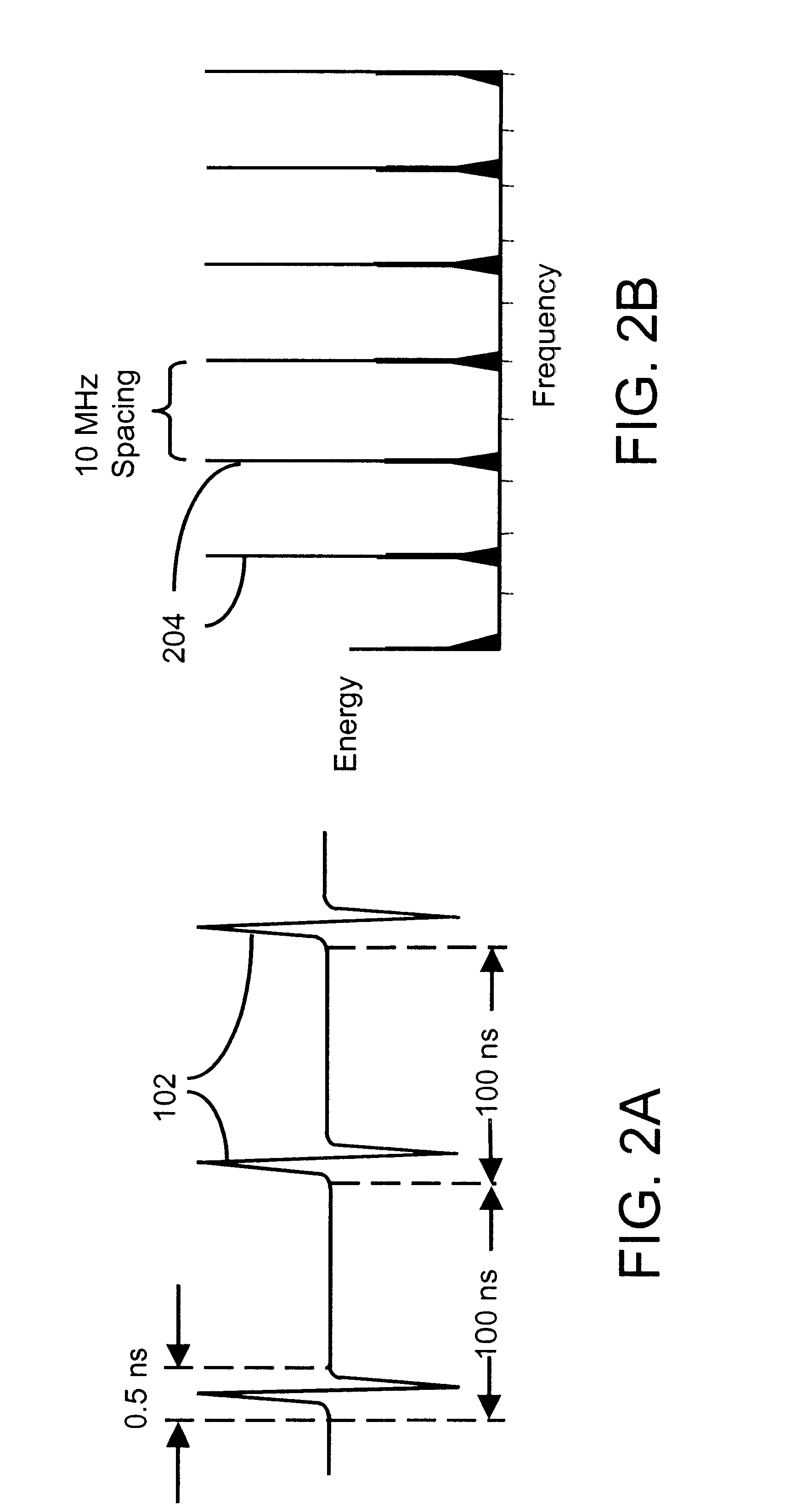System and method using impulse radio technology to track and monitor people needing health care
a technology of impulse radio and monitoring system, applied in the field of health care, can solve the problems of difficult radio contact between electronic monitors (including standard radio transmitters) and radio receivers at certain locations, overcrowded hospitals, and high hospitalization costs of all these peopl
- Summary
- Abstract
- Description
- Claims
- Application Information
AI Technical Summary
Problems solved by technology
Method used
Image
Examples
first embodiment
Referring to FIG. 9, there is a diagram illustrating the basic components of the system 900 in accordance with the present invention. The system 900 includes an electronic monitor 910 that can be carried by a patient 920 in a building such as a hospital, a nursing home or a home 930 (as shown). The electronic monitor 910 (including an impulse radio transmitter 602) can continually or periodically transmit an impulse radio signal 915 to a base unit 940 (including an impulse radio receiver 702). The base unit 940 is coupled to or incorporated within a telephone 950 (e.g., land-based phone or wireless phone).
third embodiment
If the base unit 940 fails to receive the impulse radio signal 915, then the base unit 940 interacts with the telephone 950 to send an alarm signal 955 to a central station 960. Of course, the base unit 940 and telephone 950 would not be required if the electronic monitor 910 could communicate directly with the central station 960 (see third embodiment).
In response to receiving the alarm signal 955, the central station 960 initiates a visual alarm and / or audio alarm to inform medical personnel 970 that the patient 920 may need medical assistance. For instance, if the patient 920 wanted medical assistance they could press a panic button 912 (see FIG. 10) on the electronic monitor 910 which would disable the impulse radio transmitter 602 and stop the transmission of the radio signal 915 to the base unit 940.
If the base unit 940 receives the impulse radio signal 915, then the base unit 940 does not interact with the telephone 950 to send the alarm signal 955 to the central station 960....
second embodiment
Referring to FIG. 14, there is a flowchart illustrating the basic steps of a preferred method 1400' for tracking and monitoring a patient 920 in accordance with the present invention. Beginning at step 1402', the electronic monitor 910' is attached to the patient 920 with the aid of the fastening mechanism 1002'. The fastening mechanism 1002' typically secures the electronic monitor 910' to an arm of the patient 920.
At step 1404', the sensor 1304' is coupled to the electronic monitor 910' in a manner so as to enable the monitoring of at least one vital sign of the patient 920. As described above, the sensor 1304' is capable of functioning as a temperature monitor, heart rate monitor, blood pressure monitor, blood monitor and / or a perspiration monitor. As such, the central station 960' can monitor one or more vital signs to detect health related problems of the patient 920.
At step 1406', the electronic monitor 910' can determine the location of a patient 920 within the home 930 (for ...
PUM
 Login to View More
Login to View More Abstract
Description
Claims
Application Information
 Login to View More
Login to View More - R&D
- Intellectual Property
- Life Sciences
- Materials
- Tech Scout
- Unparalleled Data Quality
- Higher Quality Content
- 60% Fewer Hallucinations
Browse by: Latest US Patents, China's latest patents, Technical Efficacy Thesaurus, Application Domain, Technology Topic, Popular Technical Reports.
© 2025 PatSnap. All rights reserved.Legal|Privacy policy|Modern Slavery Act Transparency Statement|Sitemap|About US| Contact US: help@patsnap.com



